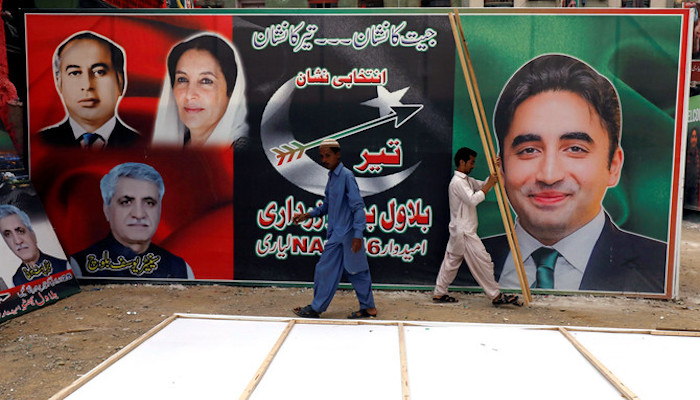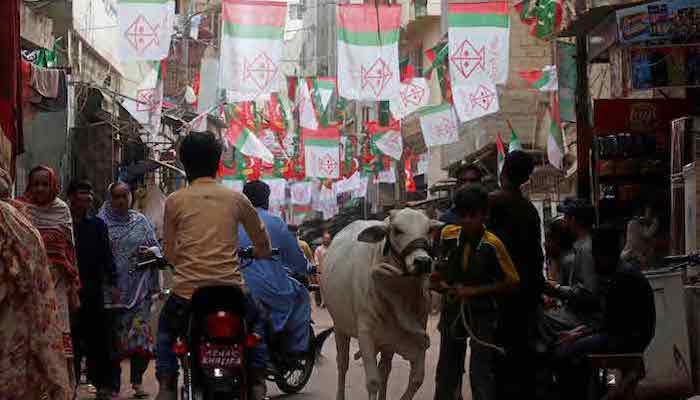The unstable political equilibrium in Sindh
Barring 1993, in all elections from 1988 to 2013, PPP and MQM combined polled more than 50% votes in Sindh
August 21, 2021

How do opposing social and political forces deal with each other and learn to coexist despite their conflictual positions? We explore this question in this article today by referring to a chapter on PPP, MQM, and Sindhi nationalists in the 1988-2020 era in Asma Faiz’s new book, ‘In Search of Lost Glory: Sindhi Nationalism in Pakistan’ (2021).
The author calls this era from 1988-2020 “an unstable equilibrium” where PPP, MQM, and Sindhi nationalists observed patterns of “conflict” as well as “cooperation” with each other. This era was marked by the long-standing demand by Sindh for provincial autonomy.
In this era, the differences between the PPP and MQM were marked, and both indulged in what Faiz calls “maximalist ethnic outbidding”. In 1988 after the violence in Hyderabad, Mohajirs shifted to Latifabad while Sindhis moved to Qasimabad. There was also a pattern of cooperation. After Benazir Bhutto became prime minister in December 1988, she tried to have a relationship based on cooperation with the MQM and the ‘Karachi Declaration’ was signed signaling the “grand ethnic bargain” that Sindh was in need for. However, this declaration fell through the cracks when the PPP refused to endorse the MQM’s demand for the repatriation of Biharis from Bangladesh, a demand that both PPP and the Sindhi nationalists were opposed to.
The Sindhi nationalists led by the late G M Syed called the PPP a representative of “Punjabi imperialism” in Sindh and the PPP led by Benazir Bhutto tried hard to retain its core constituency in Sindh despite the barrage of criticism by nationalists, and retain its federal character as well. According to the author, the PPP had this duality of being an “ethnic” party in Sindh as well as being a “federal” party outside Sindh.
In the Sindhi narrative, particularly in the nationalist discourse, there is long-standing perception of the victimhood of Sindh, something that is found in the Mohajir narrative about their ethnicity as well. There is a long list of grievances of Sindhis particularly on water issues, Kalabagh dam and “Red Indianization” of Sindh. Other issues where the PPP has over the years aligned itself with the nationalists’ position include opposition to the breakup of Sindh and provincial autonomy.
After Benazir’s untimely and unfortunate murder, the sheer sense of “persecution and ethnic subjugation” of Sindh heightened; it was a double tragedy given the “judicially sanctioned execution” of Bhutto himself. Benazir’s murder “cast a dominant shadow over Sindh”.
In the 2008 elections after Benazir’s murder, the PPP made a pledge to achieve provincial autonomy and abolish the Concurrent List of the constitution, something that it did achieve when it came to power in the form of the 18th Amendment. The MQM was concerned about halting the flow of population from the rural to urban areas. Whereas the Sindhi nationalists negotiated seat adjustments with the PPP and withdrew in its favour. The PPP came into power both in the centre and in Sindh after the 2008 elections.
From the 2013 elections onwards, what one sees is the “ethno-regional confinement” of the PPP as it failed to win in any substantial manner beyond Sindh but continued to have hold over Sindh.
As far as the MQM is concerned, its genesis can be traced back to the rural/urban Sindh quota introduced by Bhutto in the 1970s. It led to a narrowing of opportunities for Mohajirs who have been ascendant in the bureaucracy in Pakistan after Independence. It also led to perceived suffering of the Mohajirs; and the MQM whose roots lie in the student activism of Altaf Hussain and others presented itself as a non-elite representative party of Mohajirs.

The MQM has remained a strong electoral and street power for almost 30 years before it splintered into many groups and weakened from 2016 onwards. It has in the past successfully presented itself as an “ethnic entrepreneur” and has had a complicated relationship with the PPP. Due to the ‘war of terror’ in the north of Pakistan, many more internally displaced Pakhtuns and Afghans moved to Karachi, making it a multi-ethnic metropolitan.
Control over local government has been an important source of tensions between the PPP and the MQM given the rural/urban divide. The dictatorship in 2001 introduced the local government system that the MQM was happy with. The PPP in 2011 reversed the 2001 local government system and the MQM reacted strongly to this.
The PPP came up with the Sindh Peoples Local Government Ordinance by turning the five district headquarters of Karachi into metropolitan corporations headed by a mayor and in the rest of Sindh the old commissionerate was retained. In other words, the PPP gave power to the MQM in the urban local government and kept its power in the rural local government. The nationalists decried the PPP over this move and called it a ‘sell-out’. The MQM still wants more powers for the local government in Karachi.
Barring 1993, in all the elections from 1988 to 2013, the PPP and the MQM combined polled more than 50 percent votes in Sindh being representative of two respective ethnicities. The 2018 elections were controversial due to the allegations of pre-poll and post-poll rigging. The MQM only secured six NA seats. The PPP won 38 percent of the popular vote in Sindh and 75 seats in the Sindh Assembly forming the government. It continued to be unsuccessful outside Sindh.
After the 2018 elections, the Sindh-Centre relationship has been conflicted. Arrest of the PPP leadership, statements to the effect of toppling the Sindh government, the PPP’s perceived violations of its provincial autonomy, tensions over the handling of the Covid-19 pandemic have been the hallmark of this conflicted relationship.
The overall lesson is that when democracy is left to function uninterrupted, opposing political forces accommodate each other somewhat by adopting a policy of give and take – despite their conflictual relationship of “an unstable equilibrium”.
The writer is an Islamabad-based social scientist. She can be reached on [email protected]
This article originally appeared in the August 21, 2021 edition of daily The News. It can be accessed here.











